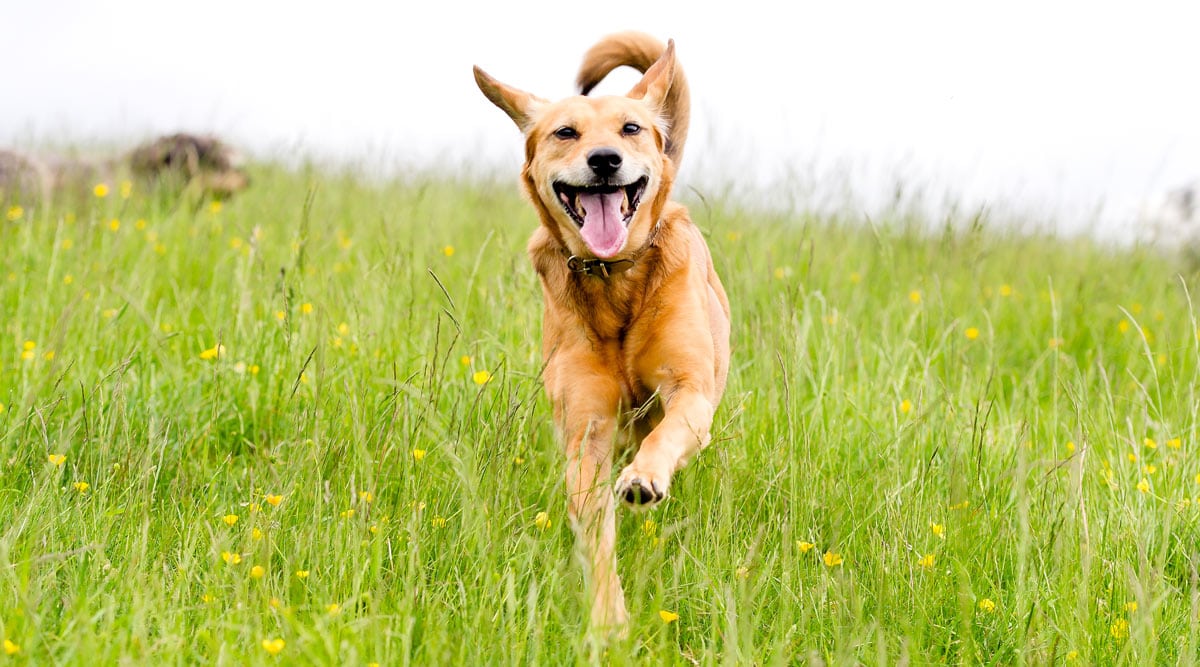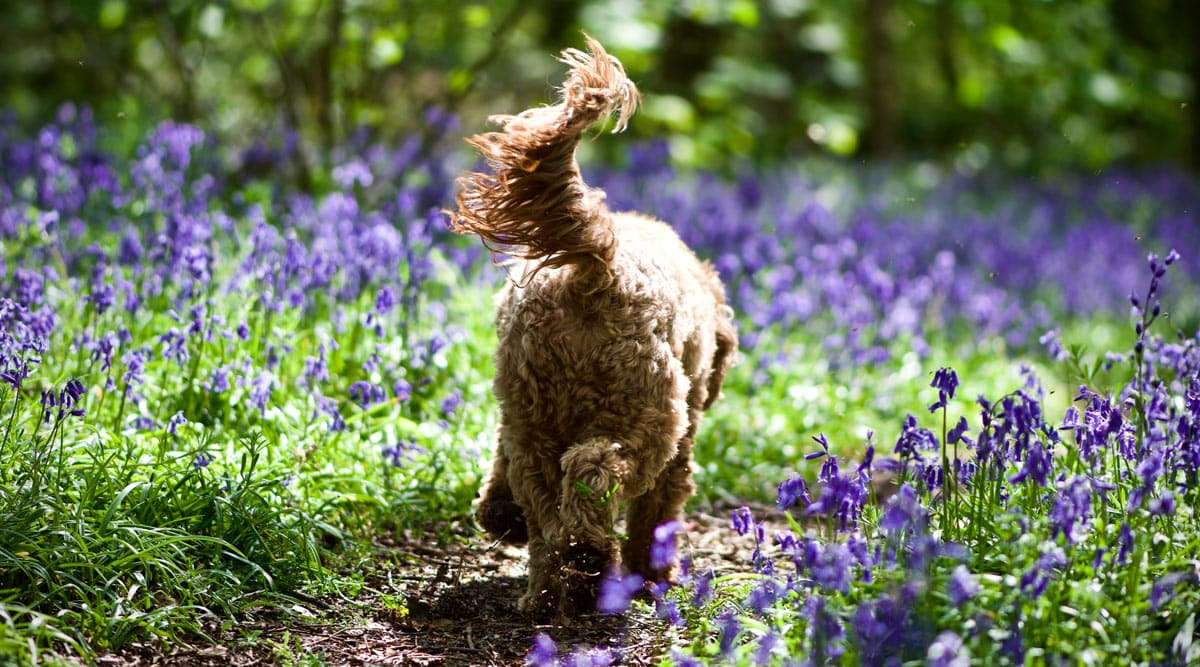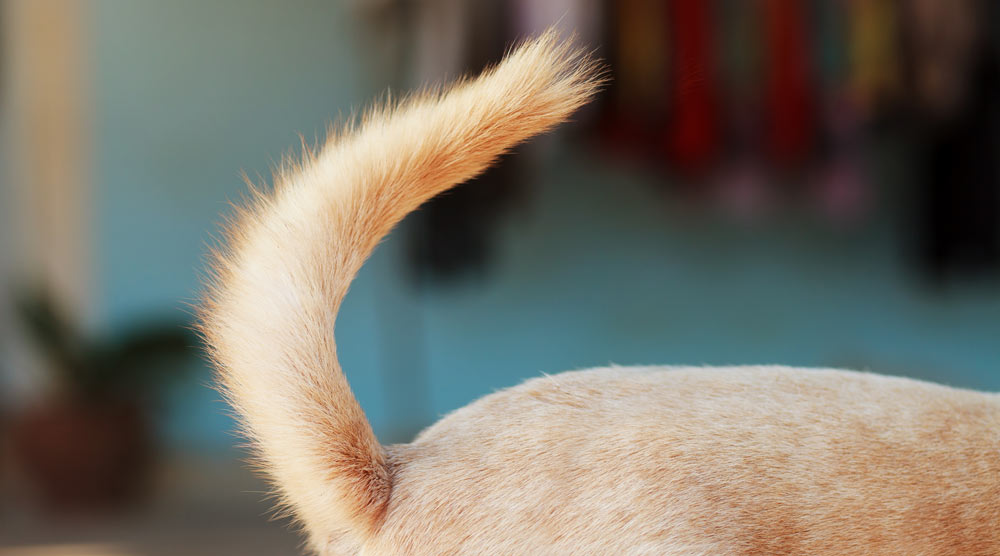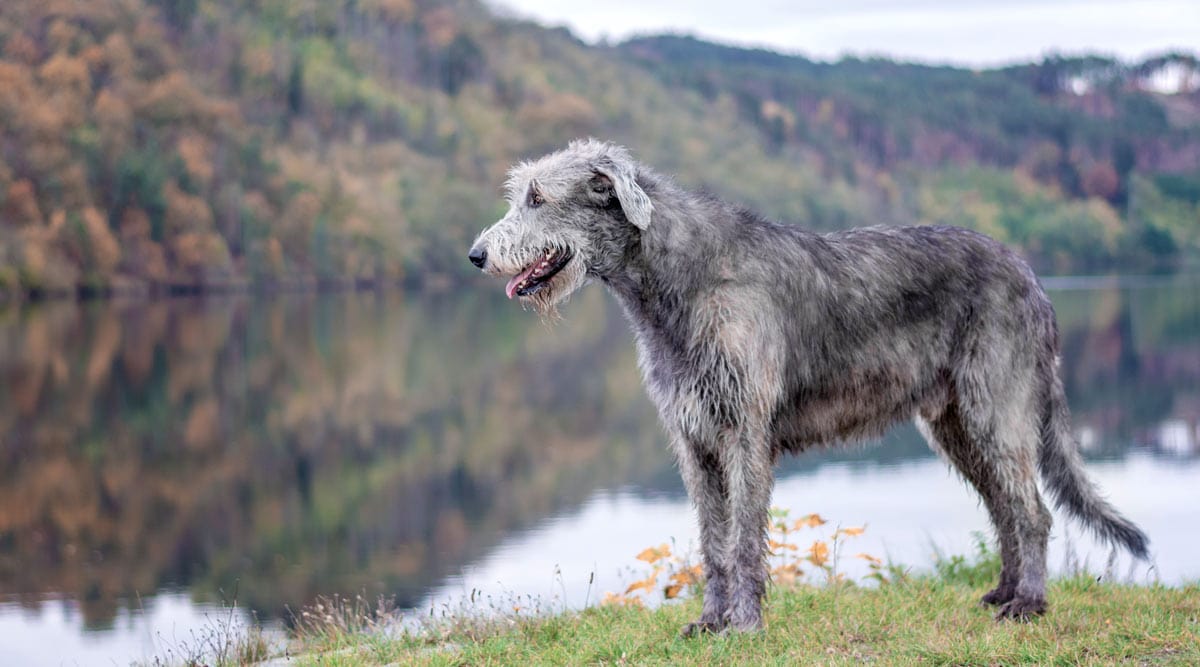Have you noticed your dog wagging their tail in a circle? This behavior, often called “helicopter tail”, is usually a sign of pure joy from our canine companions.
Let’s take a closer look at circular tail wagging and why dogs do it. We’ll also discuss other aspects of tail body language, to help you understand what your dog is feeling.
Contents
What Does a Circle Tail Wag Mean? (Helicopter Tail)
A circular tail wag almost always means that a dog is excited and happy. It’s a step up in the joyful scale compared with the classic side-to-side wagging tail.
From my years of observing dog behavior, I’ve noticed the helicopter tail often comes out when dogs greet their favorite humans. It’s more likely to happen when they haven’t seen the person for an extended period. Some dogs can’t contain their joy and give a helicopter wag every time their owner walks through the door though!
Greetings aren’t the only time you might see a circular wag . Dogs sometimes give this wag at other exciting moments, such as meal times or before a walk.
With my dogs, I’ve also noticed they’ll sometimes start circular wagging if they can see a chew but can’t reach it. This seems to show there is an element of anticipatory excitement to the helicopter wag too.
Not all breeds can show their happiness in this way though. Dogs with very short or curly corkscrew tails might not be able to wag in a circular fashion due to their limited range of motion. It’s also important to note that not all dogs use helicopter tail to express their joy.
In fact, the majority of dogs never give a circular tail wag. However, this doesn’t mean they’re any less happy or enthusiastic – they just express it differently!
Does a Round-and-Round Wag Always Mean Happiness?
Interpreting dog body language isn’t always straightforward and largely depends on the context.
With that said, a fast circular wag is as close as you can get to a guaranteed sign of excitement and happiness. It’s rare for a dog to exhibit this wagging behavior unless they’re excited.
However, the world of dogs is full of exceptions. So, while a helicopter tail is generally a sign of joy, it’s still crucial to consider the dog’s overall body language. For example, some dogs may wag in a circle if they’re over-stimulated or highly aroused.
So, it’s important not to rely only on the tail. If you see a dog’s tail wagging in a circle, but they’re also displaying signs of stress or defensiveness (like teeth-baring, looking away, lip licking, or a hunched posture), then it’s best not to approach them.
Other Types of Tail Wag
By modifying the position, speed, direction, breadth, and stiffness of their tail wag, dogs can communicate a wide range of emotions. These emotions can be positive or negative – a wagging tail certainly doesn’t always mean a happy dog!
Of course, the tail is only one component of your dog’s body language. Relying on just the tail to judge a dog’s feelings is a frequent cause of misunderstandings, as tail body language depends on the context and overall body language.
There are several common tail wag types you might observe in your furry friend. Here are a few examples:
- Relaxed. A dog at ease will usually hold their tail in a neutral position, accompanied by minimal wagging or no movement at all. The neutral position differs depending on the breed.
- Happy. A joyous dog often wags a relaxed tail from side to side, with a swishing rhythm. The tail position is usually slightly higher than neutral. As the excitement escalates, so does the wagging speed.
- Anxious. When feeling anxious, a dog typically carries their tail lower than the neutral position, possibly exhibiting a slow, narrow wag. The pace of this wag might increase with rising anxiety levels.
- Alert. An alert dog will often hold their tail in an upright, rigid position. While this “flagging” position can indicate curiosity, it could also signal defensiveness in certain scenarios.
Note: To gain a deeper understanding of tail meanings and canine communication, read our comprehensive tail meanings guide.
Why “Happy Tail Syndrome” Is a Very Different Thing
A circular wagging tail is a sign of happiness, but “happy tail syndrome” is a much more upsetting issue.
Happy tail syndrome is a medical condition that is most likely to affect dogs with powerful tails. It’s caused by the dog’s tail hitting hard surfaces, causing the skin to crack and bleed.
This syndrome is often first noticed when the owner starts seeing blood spatters on furniture or around the room. Dogs with happy tail syndrome may also develop bald spots on their tail. Over time, painful, deep wounds can form on the tail too.
The treatment for this condition depends on its severity. If detected early, it can sometimes be treated using protective padding and medication. However, in severe cases, or when conservative treatments don’t work, tail amputation might be the only option.
If you notice wounds on your dog’s tail, or any other symptoms of happy tail syndrome, it’s critical to contact a veterinarian immediately. The sooner the condition is addressed, the higher the likelihood of a positive outcome.
Summary
In the vast majority of cases, a dog wagging their tail in a circular pattern is feeling happy and excited. It’s rare for this body language signal to mean anything else, although some dogs wag in a circle when they are feeling over-aroused or anticipating a reward.
Do you have any questions about why dogs wag their tail in a circle? Please let us know in the comments section below.




